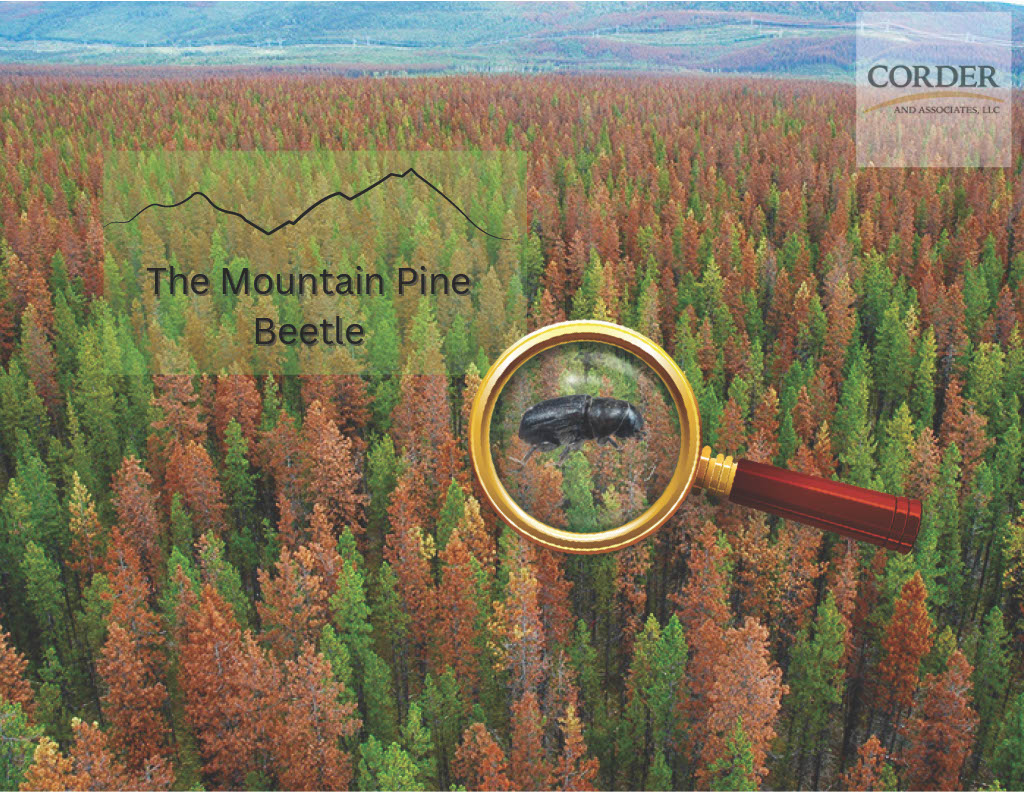The Mountain Pine Beetle
The forests that sprawl across Colorado, Wyoming, and Montana’s Rocky Mountains look different today than they did a decade ago. Millions of trees have been killed by mountain pine beetles. It doesn’t seem too long ago that conversations in the campgrounds consisted of questions about the patches attached to all the trees. What were they for? That’s when we all became familiar with the pine beetle. The pine beetle is quite small, about the size of a grain of rice, but has detrimental effects on the forests in western North America.
Although the beetles are so prominent, you rarely catch a glimpse of one. That is because they live most of their lives in the bark of pine trees. Species of pine trees include lodgepole pines, ponderosa pines, limber pines, whitebark pine, and bristlecone pine. In early autumn, the beetle larvae hatch from eggs laid under the tree’s bark. During the cold winter and early spring, the larvae feed on the tissue that carries nutrients within the tree called the phloem. After hatching, the adult beetles emerge from the bark and find another tree where they can mate and reproduce. The pine beetle generally attacks pine trees that are fully grown and eighty years or older!
The trees have ways to fight back but oftentimes are overwhelmed. Healthy trees can essentially push out the beetle and kill them with their sap and chemicals called terpenoids. To prevent this, the beetles attack in armies to overtake the tree. They utilize a chemical signal that alerts other beetles to join. Then, when enough beetles take over the tree, another chemical signal advises other beetles that there isn’t room for any more beetles. They continue on to other surrounding trees. The tree dies from a fungal infection that interferes with the water flow from the roots. The needles die, turn red within one to two years, and fall off within four to seven years.
The most recent outbreak is thought to be more severe than past ones due to several years of warmer-than-normal winter temperatures. Drought also causes added stress to the trees, and they cannot use their defenses against the beetle. Scientists are unsure at what particular temperature the beetle larvae die, but somewhere around -20 degrees Fahrenheit seems to do the trick.
The deadly red color of defeated forests can reveal a disheartening sight. However, the forests are recovering and full of life. The canopy of pine trees is opened up, and light now floods the life beneath. The trees are left alive, and the new growth flourishes with the sunlight and abundant water and nutrients freed up in the soil. Wildlife also flourishes.
The beetle’s effects on forests can increase the risk of wildfires. Trees with red needles still spread fire faster and consume standing woody trees. The dead wood that falls on the ground can cause a fire to burn intensely. The dead trees that are still standing are weak and can fall, causing injury and danger to firefighters.
To manage the outbreak and damage, forests must be cleared of the dead trees. With the warmer winters and climate changing, we could continue to see beetle populations grow. However, the outbreaks will be on a smaller scale because the tree age and species diversity that has been created by recent outbreaks make the forests less susceptible. Keep an eye out for the changes and responses within ecosystems. In the years to come, the pine trees and pine beetles will play an integral part in our forests in the Rocky Mountains.




